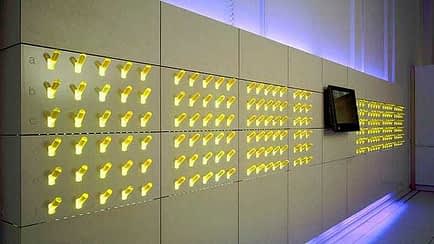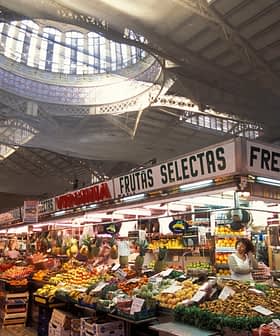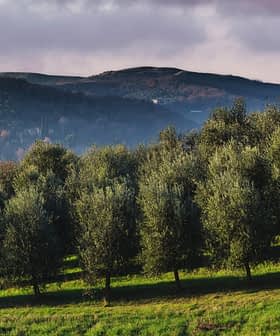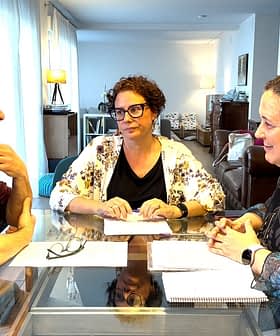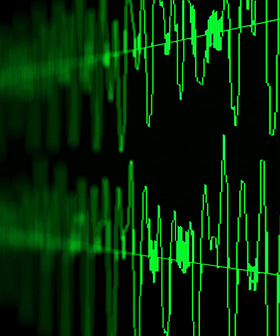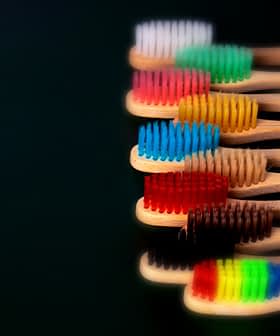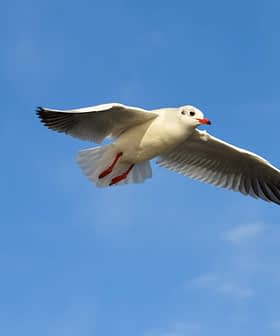Olive oil expert and two-Michelin starred chef Paco Roncero has created a cutting edge new workshop for developing culinary ideas and concepts, including an ‘oleotec’ housing no less than 216 types of olive oil.
The ultra-modern workshop, which features the latest in ceramic materials and precision technology, can be found in the bowels of the Casino de Madrid, which is also home to Roncero’s Terraza del Casion restaurant.
The space was designed to act as a laboratory for creating new culinary concepts, but also as a secretive venue for small, select groups of diners to take part in experimental dining experiences.
The centerpiece of the workshop is the back-lit oleotec featuring 216 specimens of olive oil, selected by the chef himself. The design is based on a mural, with olive oils contained in test tubes arranged in wall panels with engraved numbers and letters to identify each oil.
A central touch screen provides additional information about every olive oil on display. The oils are maintained at a constant temperature through the use of a convection cooling system and a cool back light allows the distinct color of each oil to be seen, as well as providing a visual effect in the workshop as the light is emitted through each test tube.
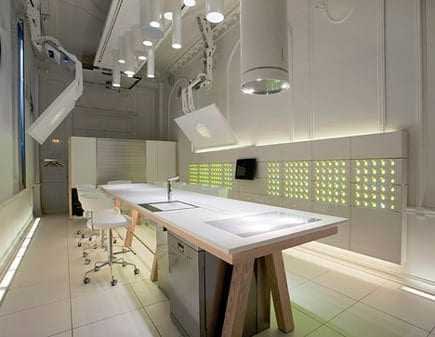
Roncero is well known for his innovative work with olive oil and has created many novel dishes using what he describes as his ‘ favorite product’ and what he calles the ‘most important ingredient is his kitchen’ in combination with molecular gastronomy techniques.
He often completely changes the texture or appearance of the oil to make a completely new product, such as a healthy butter form of olive oil made through freezing and extracting the fat. He has also created such novelties as a Parmesancheese from which the fat has been removed and replaced with olive oil and a Chinese-influenced noodle soup which contains no flour or water, only olive oil.
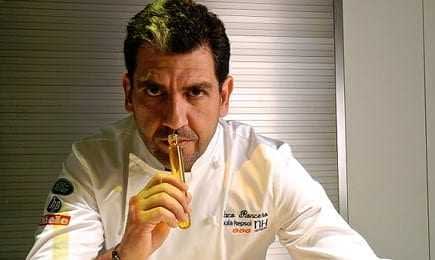
Ronceros space-age workshop, which was designed by Spanish studio Carmen Baselga Taller de Proyectos, is an invitation-only venue of experimental meals and sessions.
The space is dedicated not only to the innovation of new gastronomic creations, but also to the exploration and investigation of the relationships between gastronomy and the surroundings. Experimentation with color, shape, and flavors, as well as environmental variables such as temperature, humidity, sounds and light will be carried out in the hope of learning more about how these factors affect the way we perceive and taste food.

